Matador Network's Blog, page 203
March 5, 2024
Check Out These Cannabis-Friendly Airbnbs in Kansas City, Missouri

Geography earned Kansas City, MO, its status as the “Heart of America”. A vibrant arts, sports, and music scene has solidified KCMO as a city that represents the culture of the Midwest. On top of that, cannabis has recently been legalized for recreational use in Missouri. As no cannabis products can cross into the state of Kansas, you’ll need to choose accommodation on the “green” side of the state line if you’re planning on visiting KCMO and KCK. These are the best cannabis-friendly Airbnbs in Kansas City, Missouri.
Check out Matador’s full rundown of Kansas City Airbnbs.
Looking for Cannabis-Friendly Airbnbs? Check out Matador’s selection of the best 420-friendly accommodations: These Colorado Airbnbs Are Cannabis-Friendly and Perfect for Travelers These Are the Best Cannabis-Friendly Airbnbs in Los Angeles Exhale and Relax at These Cannabis-Friendly Airbnbs in Chicago The Top Cannabis-Friendly Airbnbs in New York Get Green at These Cannabis-Friendly Airbnbs in San Diego The Top Cannabis-Friendly Airbnbs in San Francisco Live the High Life at These Cannabis-Friendly Airbnbs in California Many Major Hotels in Denver Are Secretly 420-Friendly. Here’s How To Find and Book One
We hope you love these cannabis-friendly Airbnbs in Kansas City! Just so you know, Matador may collect a small commission from the links on this page if you decide to book a stay. Listed prices are accurate as of the time of publication.
Cannabis-friendly artist bungalow near Plaza Area Photo: Airbnb
Photo: Airbnb Photo: Airbnb
Photo: Airbnb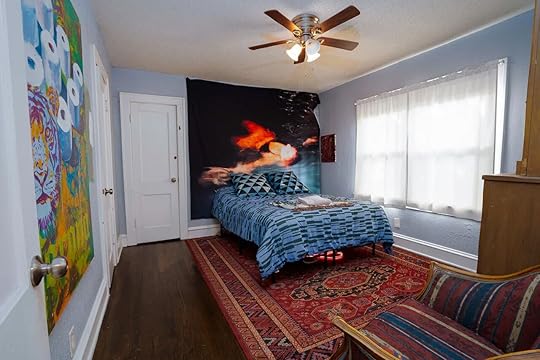 Photo: Airbnb
Photo: Airbnb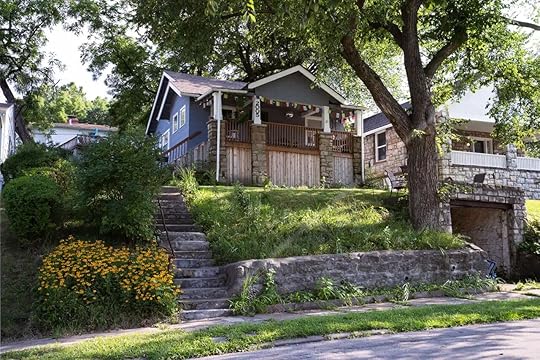 Photo: Airbnb
Photo: AirbnbSee more photosOnce in a blue moon, you find a dog-friendly Airbnb with no pet fee and get the green light to smoke a bud. That’s the deal with this one-of-a-kind cottage next to Brush Creek and the buzzing Plaza district of Kansas City. As the permanent home of a local artist, the entire property is beautifully put together with modern art on the walls and trinkets on the shelves. Spend evenings decompressing on the verandah with a smoke overlooking the green front yard.
Six guests, two bedrooms
Price: $217 per night
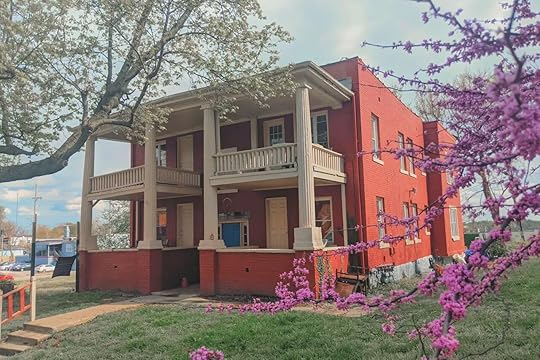 Photo: Airbnb
Photo: Airbnb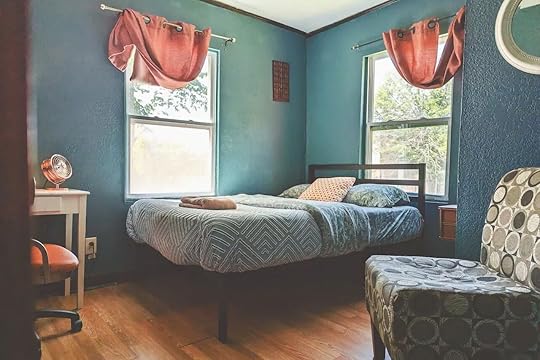 Photo: Airbnb
Photo: Airbnb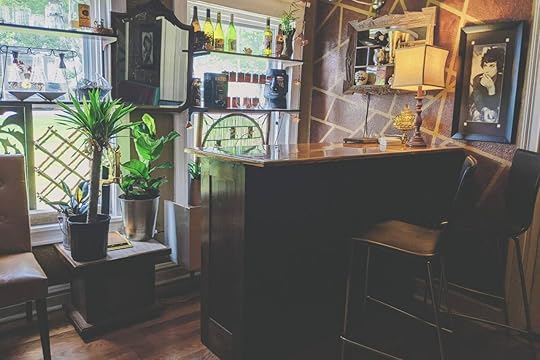 Photo: Airbnb
Photo: Airbnb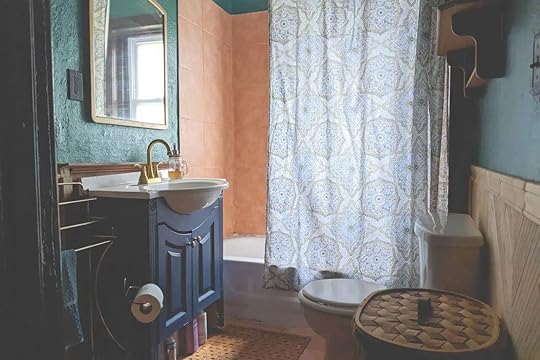 Photo: Airbnb
Photo: AirbnbSee more photosThis listing is one of several rooms in a kooky new hostel two miles east of downtown Kansas City. Besides the room, you’ll have use of a shared bathroom and the right to roam through all communal lounges where you can mingle with other guests in the speakeasy or keep to yourself in the gallery. It’s richly curated with vintage furniture and olde-worlde ornamentation and has a hipster vibe. Cannabis consumption is fine in all outdoor areas and vaping is permitted inside.
One guest, one bedroom
Price: $33 per night
 Photo: Airbnb
Photo: Airbnb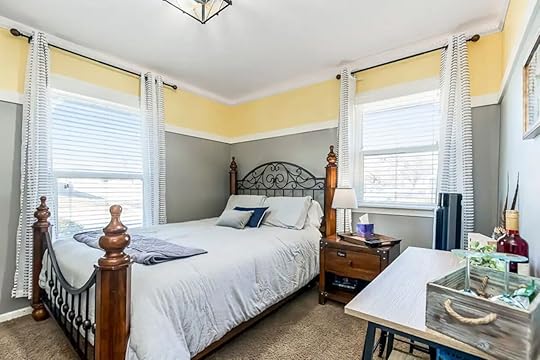 Photo: Airbnb
Photo: Airbnb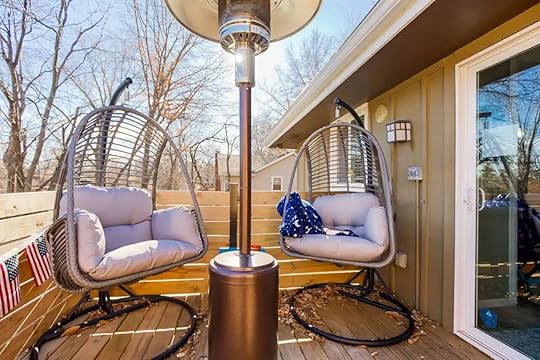 Photo: Airbnb
Photo: Airbnb Photo: Airbnb
Photo: AirbnbSee more photosSpend the night in one of Missouri’s most stunning properties by letting this private room with a shared bathroom. You’re welcome to cook in the kitchen, hang out in the lounge, and take a dip in the seasonal backyard pool. This is the five-star experience complete with fluffy bathrobes and wine on arrival – it’s more akin to a boutique hotel than self-catered accommodation. The host couple is happy for guests to smoke cannabis in outdoor spaces only.
Two guests, one bedroom
Price: $55 per night
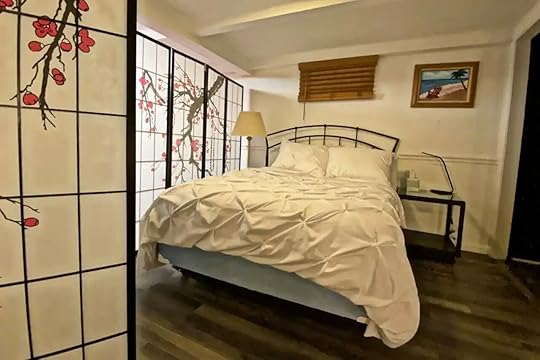 Photo: Airbnb
Photo: Airbnb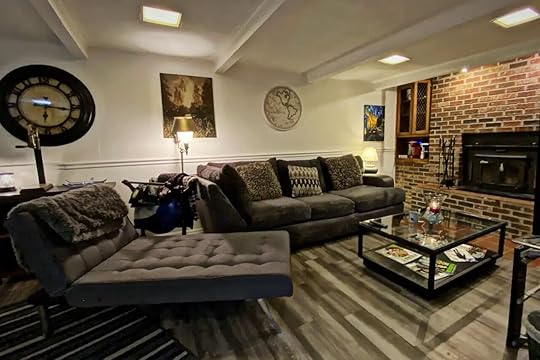 Photo: Airbnb
Photo: Airbnb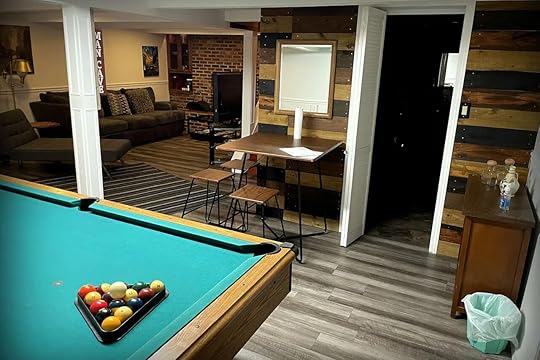 Photo: Airbnb
Photo: Airbnb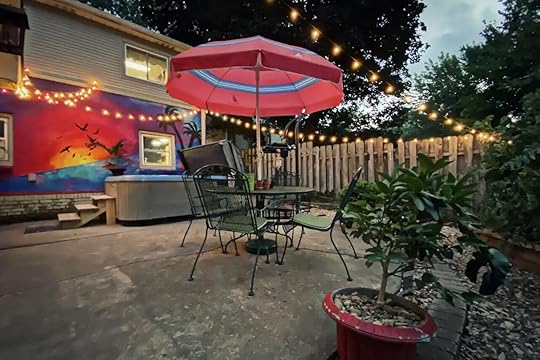 Photo: Airbnb
Photo: AirbnbSee more photosOut in the satellite city of Independence, this is one of the best 420-friendly Airbnbs in Kansas City, MO, for travelers dipping into state history. The property has a vast backyard with a hot tub, fire pit, tetherball, and bespoke murals. Any marijuana consumption is to be enjoyed solely in the outdoor areas and the hosts appreciate a heads-up. Dogs are also welcome and will relish the fenced yard. Beds are topped with memory foam mattresses and the kitchen is what all hosts should aspire to.
Eight guests, three bedrooms
Price: $114 per night
 Photo: Airbnb
Photo: Airbnb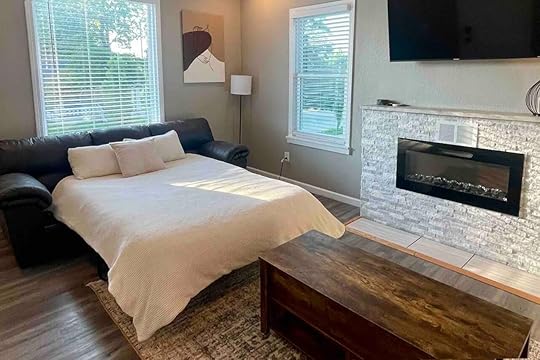 Photo: Airbnb
Photo: Airbnb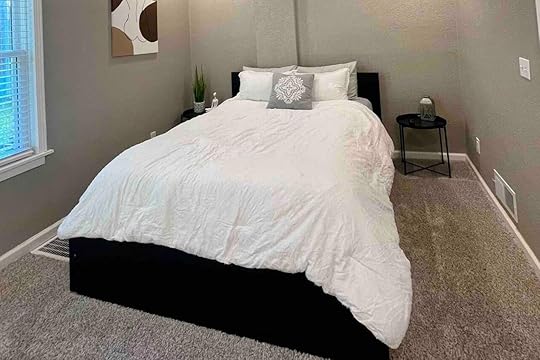 Photo: Airbnb
Photo: Airbnb Photo: Airbnb
Photo: AirbnbSee more photosThis top-rated rental unit is lit in more ways than one. Firstly, all spaces are flooded with natural light courtesy of the huge bay window and patio doors. Secondly, marijuana consumption is welcome. All cigarettes and tobacco products must be taken outdoors. All appliances are in good nick and the huge fitted kitchen makes cooking while on vacation feel like less of a chore. This is a quiet, residential neighborhood less than a 10-minute drive to downtown and the Plaza.
Four guests, one bedroom
Price: $160 per night
March 4, 2024
This Toiletry Bag Optimizes Space So Well You Can Nearly Double Your Dopp Gear
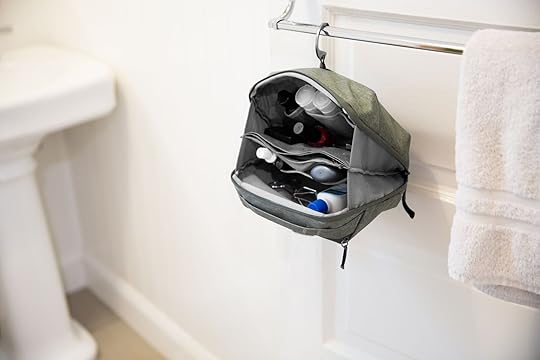
For the majority of last year, my toiletry bag was a giant Ziploc bag. A gallon freezer variety, to be exact. The reason was that my old toiletry bag (or Dopp kit, if you want to get all fancy about it) just wasn’t cutting it. The zipper wouldn’t close all the way, which had caused a couple of leaking fiascos on my most recent trip to Hawaii, and Cancun before that.
In frustration, I turned to the food storage aisle of my local Wal-Mart. And it worked – for a time. But do you know how thin a Ziploc bag is? Especially if you fill it to the brim with cologne, sunscreen, a face cream, a night cream, and God knows what else I convince myself I need to take with me on a three-day holiday? And, do you know how easy it is to puncture that bag when you throw a pair of tweezers into the mix?
So, in my despair – quite defeated, really – I turned back to finding the right toiletry bag for me. And not only did I find one I liked. I found the perfect one. The platonic ideal of Dopp kits, if I do say so myself: Peak Design’s Wash Pouch, for sale at REI for $59.95.
We hope you love the Peak Design Wash Pouch! Just so you know, Matador may collect a small commission from the links on this page if you decide to book a stay. Listed prices are accurate as of the time of publication.
Peak Design Wash Pouch – the right toiletry bag for optimizing your travel space
the holding slots and internal pouches make it easy to store many small items. Photo: REI
The reason I fell in love with this toiletry bag is for its use of interior real estate to get the most out of the fairly small footprint of the item. Coming in at only 10.2” x 6” x 4.4”, it’s a fairly standard size, but I found the layers of pockets, zippers, and closures to be perfectly situated to allow for maximum storage. This allowed me to easily keep the hotel bathroom organized on my most recent trip for work; and, in turn, made repacking a breeze before my 10 am check-out.
The interior layout made it easy to keep everything in its place when not in use. I found that the main component could fit my larger items, like deodorant and sunscreen, while the mesh internal side pocket was perfect for storing my cologne and prescription bottle, ensuring nothing toppled over in transit. There is even an interior toothbrush pouch with a magnetic zipper, so I don’t have to worry about cross-contamination and getting everything too gunky on my way home.
Not only that, but the materials used seemed to be thoughtful in design as well as functionality. Peak Design is known for well-crafted travel products, so it shouldn’t have surprised me as much as it did to find just how durable everything felt. From the TPU-coated nylon mesh pockets to the weatherproof 200-denier nylon exterior, I didn’t think twice when I jammed the Wash Pouch into my over-stuffed bag before checking it.
Other features of the Peak Design Wash Pouch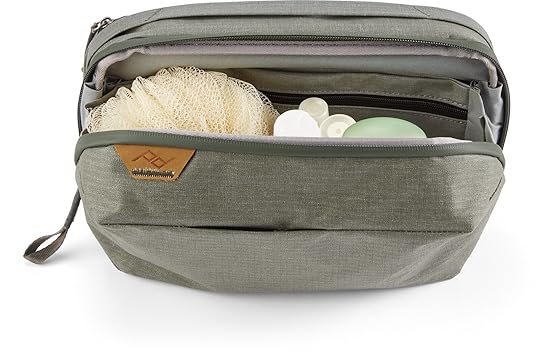
Even when stuffed, it zips up no problem. Photo: REI
When it comes down to it, Peak Design made a product that isn’t going to disappoint. I’m happy with the quality and I can tell that every inch of the design has been considered. Beyond the storage capacity, Peak Design also elevated this bag through:
Versatility with Small Spaces: It stands tall on the countertop or conveniently hangs using a foldable hook, ensuring your toiletries are always within reach without any risk of spills.Easy Maintenance: Its pockets effortlessly flip inside out for swift cleaning.Space-Saving Design: With its compact size, it fits into narrow areas.Convenient Portability: Equipped with an external grab handle, it offers easy portability.Commitment to Sustainability: The materials used (such as the 200-denier nylon) is 100 percent recyclable, showing Peak Design’s commitment to sustainability in practice.Return policyIf you buy this toiletry bag through REI, you’re subject to its (quite generous) return policy. If you’re an REI Co-Op member, you’re able to get up to an entire year to return your gear if they’re not right for you (this is limited to a still-generous 90 days if you’re not a member). A few exceptions apply to this timeline, including outdoor electronic and resell gear, which doesn’t apply here, but is still good to note!
You can make your return by mail or in-store. Make sure to have your proof of purchase if returning in-store. If doing so online, you can use their form and a printable label will be supplied (note that you’ll be charged a $5.99 fee to cover the return shipping cost).
Final thoughts on the Peak Design Wash Pouch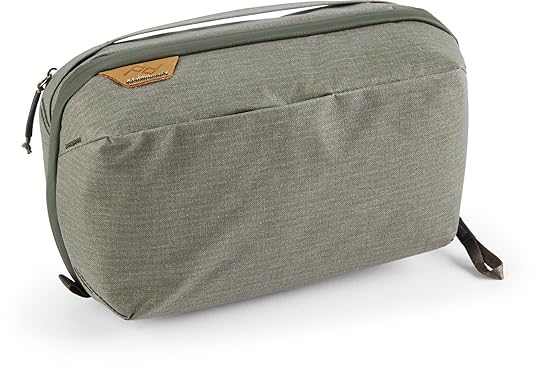
It looks pretty cool, too. Photo: REI
I’d started to feel like Goldilocks when it came to Dopp kits (this one too small, this one too flimsy), I have to say, Peak Design’s Wash Bag is juuuuust right. Between its clever use of interior pockets to maximize storage to its use, I’ve already promised this little bag of mine a few upcoming trips to NYC, Batumi, and London in our near future together. [mn-post-sender]
More like thisSustainabilityZero-Waste and Eco-Minded Must-Haves for Your Travel Toiletry BagCruising on the Norwegian Viva Is Your Ticket to Freedom and Flexibility at Sea

I took my first cruise in 2022 with low expectations and a mindset influenced by all the negative stigmas I’d heard about cruising. By the end of that voyage, I finally understood the allure of an all-inclusive oceanborne vacation, and I’ve tried ever since to correct my non-cruising friends’ misconceptions. It’s easy to sing the praises of endless food and drinks, tanning on a pool deck, and seeing some cool islands, but my argument always fell apart when they inevitably retorted: “But there’s no freedom. You’re confined to a giant floating hotel, and on a strict timetable for exploring the ports, right?”
No, you can’t pull a Robinson Crusoe, hire a dingy, explore the ocean on your own, and set up camp on an uninhabited island. You will spend a lot of time on the ship, and when you dock in ports, you’ll have limited time to explore them. But that doesn’t mean you don’t have freedom or flexibility on your voyage. If you know how to maximize your time, both on board and on shore, you’ll realize just how much independence you have, and how many opportunities there are for creative fun.
I never truly realized this until earlier this year when I took a seven-night voyage with Norwegian Cruise Line from San Juan to six Caribbean islands — one island per day — aboard the Norwegian Viva. Head throbbing with a hangover from my night out in Old San Juan, the rhythmic salsa percussion still ringing in my ears, I readied to board and wondered if my friends were right. This voyage was longer than my last one. Maybe I would get bored. Maybe I would feel restricted.
If I had known what awaited me on the Viva, it would have made the hangover much more bearable. As it turned out, traditional cruising tropes and expectations didn’t quite apply to the Norwegian Viva. Norwegian’s newest ship is a floating roulette wheel of activities that quite literally never stops spinning. If that sounds a little stressful, well, it is. But in the best way possible.
A roulette wheel of activities on board the Norwegian VivaI heard a statistic recently that claimed that 50 percent of cruise passengers don’t leave the ship when it docks in ports, instead choosing to enjoy the amenities on board. Whether or not that’s accurate, I have no idea, but one thing is certainly true: a lot more people stayed on the Viva on shore days than I expected. The reason why is immediately clear when you explore the ship. There’s so much to do there’s simply not enough hours in a day – or in a week – to do it all.
Indeed, a friend of mine had grand ambitions to try every single ship activity in a 24-hour span — and failed miserably. Kind of like showing up to a Golden Corral with a big smile and huge appetite, only to tap out after four plates thanks to the buffet’s sheer enormity.

Photo: Norwegian Cruise Line
Adrenaline seekers have the Viva Speedway, a three-level racetrack that wraps around the ship. It’s no Rainbow Road, but it’s tough to top the views from this Mario Kart-esque experience as you race your friends while looking out over the ocean horizon. Unlike Mario Kart, though, slamming into other drivers will earn you no speed boosts, and might even get you kicked off the track (I learned the hard way). To deepen the illusion that you’re at an amusement park, there’s also The Rush, a twisting water slide plunging several stories down from the top deck, and The Drop, the first-ever free-fall dry slide at sea.
If a few days have passed and you haven’t gotten into an argument with your friends or significant other yet, don’t worry – it’s time to voluntarily lock yourself in a room and pay for the privilege of escaping. The Viva has two escape rooms onboard, which somehow manage to test the limits of your friendships, as well as make those friendships even stronger. It’s also a great way to meet other passengers. For even more group bonding, check out Galaxy Pavilion, a virtual reality arcade that’s perfect for a rainy sea day. While everyone else is hunkering down in their rooms or vegging out at the buffet, you could be blasting away zombies in a haunted amusement park that feels too real for comfort.

Photo: Norwegian Cruise Line
At night, there’s the traditional nightclub and theater performances, but nothing brings people together (or potentially drives them apart) like karaoke. Put in your request, wait eagerly to hear your name called, then serenade your friends and total strangers by butchering their favorite classics. Axel, a German friend I made onboard, sang a truly memorable rendition of The Backstreet Boys’ “I Want it That Way,” and while his “I Vaaaaant it Zaaaaht Vayyyy” cover won’t be going platinum anytime soon, it’s one of my fondest memories from the trip.
Shore excursions beyond the Norwegian VivaBefore I took a cruise, my perception of shore excursions was pretty narrow. In my head, they were mostly city walking tours and bus trips with a guide’s voice crackling inconsistently over a microphone. On Norwegian cruises, the decision paralysis is real when it comes to shore excursions. I found myself making the impossible choice between taking jungle canopy zipline tours and a cooking class in Antigua, between visiting an organic local farm and taking a luxury catamaran cruise in St. Lucia, and between kayaking through a mangrove lagoon and having a cycleboat party in St. Thomas.

Photo: Eben Diskin
Horseback riding on St. Maarten was definitely the highlight. You’ll ride the winding trails around the coastline, with views of the neighboring islands of St. Barts and Saba, and finish by taking your horse for a ride through the water. Don’t worry if you have no horseback-riding experience, as the horses know their way around the coastline with very little help. My horse, Xena – yes, like the warrior princess – was perfectly well-behaved, until snacktime hit, which seemed to happen every 10 minutes. Her appetite was much like a cruise passenger whose room happens to be right around the corner from the buffet.
Dining on the Norwegian VivaAs in life, the most important thing on the Viva is food. When you first board, you’ll be tasked with one of the most difficult decisions of your voyage (and perhaps of your entire year): where to eat. There are eight specialty restaurants onboard, each of which requires a reservation to ensure you actually get a seat. These restaurants range from Japanese hibachi to classic steakhouse and boujee French bistro, each with its own distinct aesthetic and food that’s worth the extra surcharge. If you don’t want to, you never have to eat at the same venue twice. Spend one night feasting on escargot and lobster thermidor in dignified fashion at Le Bistro, and the next listening to a Japanese chef at Hasuki sing a rice-themed remix of Bon Jovi’s “It’s My Life” while flinging his cleaver in the air.

Photo: Norwegian Cruise Line
Foregoing specialty dining doesn’t mean you’ll be strapping on the feed bag at the buffet every night, either. There are plenty of eateries that don’t require a reservation of extra charge, such as the pub-like The Local Bar & Grill (open late night for those post-nightclub cravings) and Indulge, an around-the-world style food hall with different stations for various international cuisines, with ordering done entirely by tablet. For fans of the traditional, there’s Hudson’s, an upscale dining room (minus the dress code), with floor-to-ceiling windows for epic panoramic views. If it sounds stuffy, don’t worry – I showed up in a swimsuit and sleeveless shirt, sweaty after a day of shore excursions, and the waiter never broke his poker face.

Photo: Norwegian Cruise Line
Those who value maximum flexibility, who can’t wait to emancipate themselves from anything resembling a plan or schedule, will be relieved to learn that port days can look however you want them to. You have more options than just signing up for a shore excursion or staying on the ship. The spirit of off-the-beaten-path adventure is very much alive on a cruise — you just need to take a little initiative to make it happen.
As a screw-the-itinerary guy myself, I wanted to see what it’s like to cross the Rubicon and divorce myself from the ship entirely. No planned excursions. No guided tours. Just escaping the ship’s protective bubble and allowing, even welcoming, the unexpected. When we docked in Barbados, a few friends and I approached the first taxi driver we saw.
“We’d like to go to Bathsheba Beach and anywhere else you’d recommend. We need to be back by 5 PM.”
Luckily, we had approached the right man. Marson Craigwell, the 73-year-old veteran cab driver, knew the island like his own backyard. For just $150, he agreed to drive us around all day, to Bathsheba Beach and a few other must-see destinations that he absolutely insisted on.
“We’ll be back by 5, right?” my friend Meg asked, worried about missing the ship’s departure. Our fate, after all, was now in the hands of Marson Craigwell, who just laughed.
“You’ll be back by 5, but not a minute earlier!” he said, wagging his finger. “So much to see!”
He drove us first to the Barbados Wildlife Reserve where we saw green monkeys climbing up trees and swinging from vines Donkey Kong-style. Then he brought us to the Flower Forest Botanical Garden, where we had lunch, and lastly to Bathsheba Beach, defined by the massive boulders strewn about the shore. A retired ballroom dancing champion and not-so-retired womanizer, Marson regaled us with his sexcapades and anecdotes of local lore as he drove us around the island.

Photo: Richard Semik/Shutterstock
“You think he’s full of it?” my friend Sean whispered to me as we approached the Flower Forest, suspecting our 73-year-old driver was embellishing his personal conquests.
“Ah, Wanda!” Marson greeted the woman at the Flower Forest gift shop. “Friends, you will not find a more beautiful woman in all of Barbados. Eyes like this, beautiful blue eyes, they make you go blind.”
He pretended to shield his eyes from the sun, and she blushed despite herself.
“No,” I told Sean, “I don’t think he’s full of it.”

Photo: photosounds/Shutterstock
What really struck me, though, wasn’t this 73-year-old-man’s insatiable flirtatiousness – it was that he knew every single person’s name, everywhere we went on the island, from the gate agents at the cruise port to the groundskeepers at the botanic garden. Spending just a few hours with Marson, I felt like I knew them all too.
True to his word, we arrived back at the ship at 4:57 PM – three minutes to spare until we were those people, left behind by the cruise ship on Barbados, forced to bunk with Marson for who knows how long. Meg, who had been frantically checking her watch for the past 30 minutes, threw angry glares at me as we ran up the gangway.
“Wasn’t that fun?” I said, in complete seriousness, once we had safely boarded.
Like the woman in the Flower Forest gift shop, she couldn’t pretend to be annoyed for long. For all of us, it had been one of the most fun days of the trip, and the best part was that that experience wasn’t limited to Barbados. Every island you visit on a cruise is full of Marson Craigwells, each with their own stories, helpful tips, and colorful personalities – you just have to find them.
Whether you’re feasting on a seemingly endless buffet of onboard activities, making an impossible choice between dozens of tempting shore excursions, or choosing your own adventure with the Marson Craigwells of the world, Norwegian gives you the independence you need to turn anyone into a cruise convert. 
This 87-Day Arctic to Antarctica Luxury Cruise Stops in 12 Countries Along the Way

If you can’t choose between an Arctic cruise and an Antartica cruise, there’s an obvious solution to your dilmema: Viking’s From the Arctic to Antarctica voyage.
Luxury cruise line Viking might be better known for its river cruises, especially in Europe, but it’s not a one-trick pony. Viking actually sails on just about every single body of water out there (rivers, oceans, America’s Great Lakes), in just about every destination imaginable, including both ends of the world: the Arctic and Antarctica. But these extreme destinations are never usually combined in one long and extraordinary cruise — until now.
Viking’s From the Arctic to Antarctica cruise is a 87-day journey that includes stops in 12 countries across three continents. The sailing will start in the capital of Greenland, Nuuk, on September 3, 2025, and includes 10 days of exploration in and around the world’s largest island, interrupted by several days in the Canadian Arctic Archipelago where the ship will visit some of the earth’s most remote corners. Wildlife abounds in this part of the world, and lucky passengers, armed with patience and binoculars, will be rewarded with the sights of polar bears, bowhead whales, beluga whales, and a large variety of birds among other fascinating creatures. From the very top of the world, the Viking Octantis will reach the east coast of North America and sail south on the Atlantic Ocean, stopping in over a dozen destinations in Quebec, Ontario, Nova Scotia, Virginia, South Carolina, Florida, and Mexico, before crossing the Caribbean Sea and finally the Panama Canal. After reaching the Pacific Ocean via the world’s most famous canal, the expedition ship will make its way along the coast of South America, stopping in Ecuador, Peru, and Chile, before going all the way around Cape Horn to Ushuaia and through the infamous Drake Passage to reach the Antarctic Peninsula. The cruise ends in Ushuaia where a chartered flight takes travelers to Buenos Aires, Argentina, from where they can fly back home.

Photo: Viking
As if this trip wasn’t packed with enough outstanding stops and hard-to-reach places, while in South America, passengers will be offered the chance to visit some bucket-list destinations, namely the Galápagos Islands to see unique wildlife and flora, and the 15th-century Inca citadel that is Machu Picchu.
The Viking Octantis is only one of two expedition ships owned by the cruise line, the other one being the Viking Polaris. Built in 2022, it is a modern and luxurious vessel designed to access remote destinations. It can accommodate a maximum of 378 guests and 256 crew members for an intimate and pampered experience. All 189 staterooms have balconies so even if you can only afford the cheapest room, you’ll have a grand view. Being an expedition ship, the Viking Octantis is equipped with kayaks, motorboats, and Zodiacs to take passengers on excursions, as well as two yellow submarines, and a science lab which guests can access. Take a virtual tour of the ship to see what awaits you if you book this trip.

The Viking Octantis in Antarctica. Photo: Viking
Of course, none of this comes cheap, starting at $104,995 per person; however there is a way to soften the blow a little. Travelers who make their mind fast and book this cruise before March 31, 2024, can benefit from an exclusive offer worth up to $40,000 per couple, including:
Free business-class airfare and transfers$1,000 shore excursions credit$1,000 onboard creditAll onboard gratuities and service feesFree visa services so you don’t have to handle any paperworkWiFi packageSilver Spirits beverage package (covers any drinks, excluding champagne, up to $18, including premium wines by the glass, cocktails, all house pouring wines, champagnes, beers, liquors, well drinks, mixers/long drinks and soft drinks throughout the day)Despite the price, the From the Arctic to Antarctica voyage must be a popular one since a September 2026 sailing, this time onboard Viking’s second expedition ship, the Viking Polaris, is already scheduled.
While this sailing looks like an over-the-top cruise, you might be surprised to learn that it is not even Viking’s longest itinerary. The cruise line’s longest journey is the 180-day Viking World Voyage I whose itinerary spans 37 countries and six continents. The Viking World Voyage will set sail on December 19, 2024. 
Where Does the Waste Go on Cruise Ships, and Is It Really Sustainable?

Don’t pretend it hasn’t crossed your mind. When you flush a cruise ship toilet and hear that rapid, louder-than-usual whooshing sound, you wonder as you stare at the empty bowl … “where does it all go?” On land, we have all kinds of easy explanations. We have sewer systems that pump to sewage treatment plants where the waste is processed and treated. But at sea, when you may not be making landfall for days, what happens to it?
You wander out of the bathroom and onto your private balcony, where you sit and stare out at the vast sea. Then it hits you. “What about everything else?” It’s not just human waste that seemingly has nowhere to go in the middle of the ocean, but food waste, plastic waste, and pretty much everything else we mindlessly toss in the trash. There are no dumpsters around the corner, no recycling plants nearby. How do cruise ships dispose of waste in a sustainable manner, so that doesn’t do irreparable harm to the environment?
Nothing that’s human-made in this world is 100 percent sustainable. That said, as public attention to sustainability efforts across all industries has increased, cruise ships have implemented a number of sophisticated treatment and recycling programs for everything from sewage and organic waste to landfill diversion in order to minimize the environmental impact of leisure on the water.
How waste disposal actually worksFirst of all, before we start talking about getting rid of waste — what happens to it on the ship? It has to be stored somewhere until it’s ready to be discharged, after all.
“Human waste is processed through our advanced wastewater treatment system,” Sarah Dwyer, Sustainability Program Manager for Virgin Voyages, tells Matador Network. “This system processes all blackwater (toilets), greywater (sinks and showers), laundry water, galley greywater, and food waste reject water to comply with MARPOL (International Convention for the Prevention of Pollution from Ships) regulations.”
The process is similar on Uniworld River Cruises although waste storage on a smaller river ship will differ somewhat from storage on a huge ocean liner.
“Human waste is collected in a tank (with a bacteria system) and this is emptied regularly, depending on where the ships are docked and whether we have access to the local sewerage system or if we have an external company coming to pump it out,” Julie Higgins, Sustainability Officer for Uniworld River Cruises, tells Matador Network. “For food waste, each ship has a geographical partner that either collects the food waste for animal feed or uses it for biofuel creation. These pickup points are fixed according to each itinerary.”
It’s not exactly surprising that cruise ships have pretty well-developed and intricate methods of getting rid of their waste. On Uniworld, both collection and offloading are more frequent, given the closer proximity of port.
Food waste is “collected by various companies, while human waste is collected in tanks on board each ship and then disposed of either directly into the city or town sewerage system,” Higgins says. “Otherwise, we have companies that come and collect it from our tanks when this is not possible depending on port facilities.”
As for larger ships like those operated by Virgin Voyages, waste must be discharged a certain distance from shore, or stored in a special recycling center for offloading.
“For our advanced wastewater treatment process, effluent (liquid waste or sewage) is held on board and then discharged at distances greater than three nautical miles from shore,” Dwyer says. “Food waste is either pulverized and discharged (12 nautical miles from shore and at a speed greater than six knots), or it’s stored in our waste recycling center to be offloaded in port.”
Is waste disposal actually sustainable?The big complaint facing cruise lines is the issue of sustainability. From carbon emissions to how waste impacts the surrounding ecosystem, there are very real concerns about the impact cruises have on the ocean. That’s why environmental regulations are tighter than ever, and cruise lines have implemented strict treatment methods to limit any harm done by waste disposal.
“Our advanced wastewater treatment system is calibrated to meet stringent water quality standards under MARPOL and the US Clean Water Act,” Dwyer says. “Our crew ensures that our vessels are in compliance with the the National Pollutant Discharge Elimination System and Vessel General Permit, which are monitored by the Environmental Protection Agency.”
What does this actually mean? Well, everything from wastewater treatment methods to offloading strategies that divert waste from landfills.
“Our wastewater is treated by the bacteria within our tanks on board, which forms something we call ‘sludge,’” Higgins says. “We then dispose of this ‘sludge’ responsibly … over the years we have formed a reliable network that allows us to dispose in a responsible manner and not pollute the areas we sail through.”
The most visible part of Virgin Voyages’ sustainability program is its reduction of single-use plastics on board, as well as incorporating more sustainable materials for its passengers. From banning plastic utensils to using reusable food containers in restaurants, the goal is to limit how much non-recyclable waste is even produced in the first place.
“We collect and sort recyclable waste on board, which is then offloaded in our primary ports such as Miami,” Dwyer says. “We also have a recycling takeback program from our beach club operation in Bimini (Bahamas) to limit recyclable materials that would otherwise be sent to the landfill. We also vet the waste providers that we partner with on-shore to ensure waste is handled appropriately.”
In an industry that’s inherently not known for sustainability, it’s clear that cruise lines do all they can to reduce their environmental impact. But is it enough?
The impact of waste disposal on the oceanWhile many cruise lines take sustainability seriously and ensure their waste management systems are up to code, that’s not always the case, resulting in harmful pollutants entering the ocean.
“Several cruise ships still use scrubber technology, which discharges a toxic cocktail of petroleum byproducts from ships directly into the ocean with little to no treatment,” Marcie Keever, Oceans Program Director at Friends of the Earth, tells Matador Network. “The ICCT (International Council on Clean Transportation) estimates that in one year, ships worldwide will emit at least 10 gigatons of scrubber wastewater, approximately 15 percent of which comes from the cruise industry.”
She also believes more oversight is needed to ensure the cruise industry’s sustainability standards are as strict as they should be. And indeed, however strict those regulations might be, without proper oversight, the rules themselves (if frequently broken) are irrelevant.
“The cruise industry remains a major contributor to air and ocean pollution, repeatedly failing health compliance and environmental tests,” she claims. “At the federal level, Homeland Security and the EPA provide little regulation enforcement and no oversight on wastewater discharge or public health, even though cruise ships continue to be a major spreader of harmful pathogens like COVID-19.”
Indeed, Carnival was fined in 2019 for dumping waste into the ocean. Apart from ocean water, Keever notes cruise ports themselves are also a serious victim of cruise ship waste.
“One community in Alaska fought hard against the industry after being filled with trash and sewage from ships,” she says. “In addition, carbon emissions from ships harm the places where they dock. Friends of the Earth is working to help ports electrify to reduce carbon emissions and improve air quality for surrounding communities.”
Just as every cruise line has its own waste processing and disposal system, each cruise line also adheres differently to sustainability standards. Clearly, most cruise lines take plenty of steps to make sure they’re handling and disposing of waste as sustainably as possible, though there will always be improvements to be made and higher standards to be reached. It’s also important to continue holding cruise lines accountable for their waste disposal processes. 
Celebrate Cherry Blossom Season in Vancouver With Some of the Best Blossoms Outside Japan
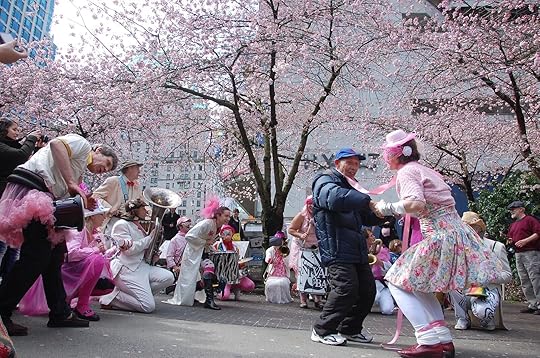
When you think of cherry blossom season, your mind probably jumps to the gardens of Tokyo. Japan is famous for its cherry blossoms, which have become an icon of the country itself. But for many cherry blossom enthusiasts, actually visiting Japan is out of the question — both logistically and financially. Luckily, you don’t actually have to travel across the world to see some truly spectacular cherry blossom displays.
Vancouver, in British Columbia, Canada, is one of the best places in North America to see cherry blossoms. The season begins around early March and lasts until mid-April each year, and blossoms can be seen all around the city — from the botanical garden on the University of British Columbia campus to the groves of Akebono in Stanley Park and the trees lining the road in the Arbutus neighborhood.
But how did Japan’s iconic blooms make their way nearly 5,000 miles to Vancouver?
Vancouver’s cherry blossom historyVancouver’s cherry blossom story begins in the early 1930s when the mayors of Kobe and Yokohama in Japan presented the Park Board of Vancouver with 500 Japanese cherry trees. The trees were gifted to be planted at the Japanese cenotaph in Stanley Park, which honors Japanese Canadians who served in World War I.
By the mid-1950s, thousands of trees on city streets were being removed due to problems caused by their roots and canopies. The smaller and less invasive cherry trees were planted in their place. In 1958, 300 more cherry trees were donated by the Japanese consul to promote good will and friendship between the two nations. They were planted along Cambie Boulevard, between 49th and 33rd Avenues, in Queen Elizabeth Park, and around the Japanese Monument in Stanley Park. Now, cherry trees make up a significant portion of the city’s tree species, with more planted each year thanks to their local popularity.
It’s no surprise that these flowers that represent Japan have been lovingly embraced by Vancouver — so much so that there’s an annual Cherry Blossom Festival to celebrate the blooming season.
The Cherry Blossom FestivalVancouver’s signature springtime event, the Cherry Blossom Festival is a celebration of the city’s adopted flower. Taking place this year from March 29 to April 25, the monthlong festival consists of a diverse range of blossom-related activities, giving both locals and visitors an appreciation for the special flower.

Photo: Vancouver Cherry Blossom Festival
“The festival inspires participants to express their response to these extraordinary trees in music, poetry, photography, art design, craft, and cuisine,” Rofolfo Parra, Chief Concierge at the JW Marriott Parq Vancouver, tells Matador Network.
The Big Picnic is one of the festival’s premier events. Attendees gather and relax underneath cherry trees in the Yaletown neighborhood while listening to local artists on the Cherry Jam Stage. It encourages friends and families to meet up for a picnic to appreciate the cherry blossoms, celebrate spring, and enjoy entertainment, food, and interactive activities.
For Japanese cultural enthusiasts, make sure to check out the Sakura Days Japan Fair at the VanDusen Botanical Garden — a celebration of all things Japan. Taking place outdoors with selected vendors, a tea ceremony, taiko drumming, theater performances, and sake tasting, the fair invites guests to immerse themselves in Japanese food, art, and music.
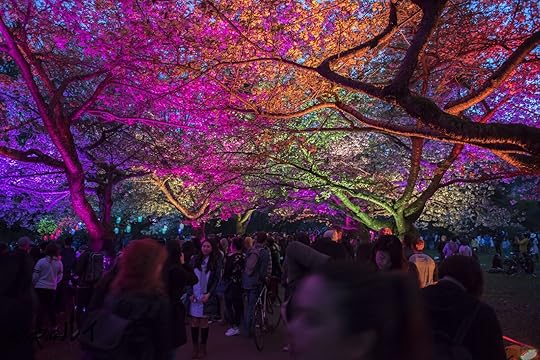
Photo: Vancouver Cherry Blossom Festival
One of the festival’s most exciting events is Blossoms After Dark, a magical walk taking place between 6 and 10 PM. Experience the cherry blossoms lit up at night with project mapping,
lighting, and lanterns. You can also expect to encounter performers, music, and art installations around every corner.
“Each year more events are added to the program,” Parra says. “The festival is also building new international friendships and cross-cultural exchanges through the international Haiku Invitational, which annually receives poems from 43 countries.”
Where to see Vancouver cherry blossoms around the cityYou don’t necessarily need to attend festival events to enjoy Vancouver’s cherry blossoms. You can take your own self-guided tour of the city’s blossoms simply by wandering the streets.
“We have a blossoms map that highlights all of the cherry trees across the city with information
about when and where the blossoms are,” Andrea Arnot, Executive Director of the Vancouver Cherry Blossom Festival tells Matador Network. “We encourage residents and tourists alike to explore the cherry blossoms throughout the city and create their own hanami (flower-viewing) experience with family or friends.”
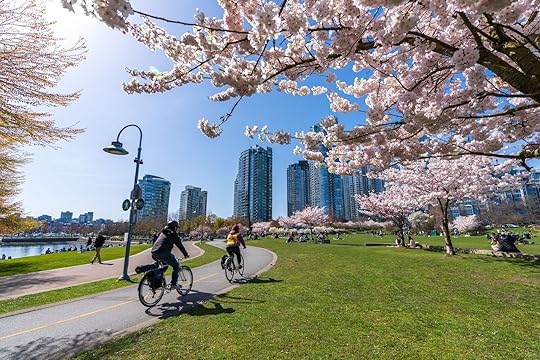
Photo: Shawn.ccf/Shutterstock
Indeed, wandering around Vancouver isn’t just the best way to see the cherry blossoms — it’s the best way to get acquainted with the city itself. Some of the city’s most beautiful blossoms are located in parks and neighborhoods visitors are probably interested in anyway.
“Some of the most spectacular cherry tree groves are located downtown with skyscrapers, oceanfront, or park settings as the backdrop,” Arnot says.
One of the best places to see cherry blossoms is on the beautiful campus of the University of British Columbia whose botanical garden is home to a striking arrangement of Japanese plants. You can also find a double row of Shirotae and a grove of Shiro-fugen (different varieties of flowering Japanese cherry trees) along the path to the Japanese monument in Stanley Park, as well as a grove of Akebono in the Rose Garden. If you’d rather just go for a quiet neighborhood stroll, check out the Pandora blossoms on West 6th Avenue, the Shirotae blossoms on 1st Avenue, and the Birch Bark Cherry Trees in the Arbutus neighborhood on King Edward Avenue.
Plan a backcountry ski trip

Grab a seat at the bar in a locals’ hangout in any ski town the world over and you’ll encounter long, eloquent, and often exaggerated tales of life-changing backcountry trips. The storyteller, perhaps a rugged local with chunks of icicle still clinging to the lower tentacles of his disheveled beard, seems so cunning, so brave, and accomplished, that it’s near impossible not to desire a story of conquest to bring home to your local pub. First, you need the right splitboarding gear in order to get out in the backcountry safely and have a good time while you’re at it.
Building your outdoor gear setup? Check out Matador’s guides to everything you need to thrive outside:The perfect backpack for every type of traveler, from hostelers to hikers10 must-haves for the traveling yogiWhat to pack for an epic trekking adventure in Latin AmericaAll the fall camping gear you need to have an epic tripAll the outdoor gear you need to keep moving on the trail this spring
We hope you love the splitboarding gear we recommend! Just so you know, Matador may collect a small commission from the links on this page if you decide to book a stay. Listed prices are accurate as of the time of publication.
Backcountry touring isn’t all about steep lines and tall tales, though. It’s about thorough trip planning and constant progression. It’s about having proper gear, being able to read an avalanche forecast, and not being too macho to pull the plug and head back to the trailhead when conditions look sketchy.
The more experience I gain, the more I appreciate the whole process. Routing a backcountry tour is actually fun when everyone is on the same page. Planning for the trip is the perfect opportunity to get everyone together the night before, sip a hot toddy or two, and get organized.
Here we’ll take a look at the necessary gear and planning techniques for backcountry touring.
How to plan a splitboarding trip:Splitboarding gearHow to prepare for a splitboarding tripSplitboarding gear in the fieldSplitboarding gear and trip preparationSplitboarding gear
Photo: lilking/Shutterstock
Touring on a snowboard requires a lot of specific gear to help you both perform well and stay safe in the high country. Here’s all the splitboarding gear you need for a successful day in the backcountry.
Splitboard or skis, of course. I ride the Arbor Landmark Camber because I’ve long been a fan of the brand’s eco-first mantra and top-tier snowboards. The board is designed to both float well in backcountry powder and carve tight turns. I use a hardboot setup on it (more on this below) which means that when ascending, all I’m lifting is this ultra-light splitboard and a pair of Spark R&D Tech Toes (similar to what skiers use to climb) rather than clunky bindings and more weight. The board features an EcoPlastic top sheet and due to its unique camber design, more touch points to the snow than any other splitboard I’ve ridden. This means sharp-cut turns and quick maneuvers are easier than ever. The edges are made of recycled steel, it’s lined with eco-friendly resin and wax, and the board is built in a facility powered by 100 percent renewable energy. I’ve never found a more values-aligned snowboard, and it performs just as epically.Loose-heel bindings. For the softboot splitboarders, I recommend the Spark R&D Surge splitboard bindings. They are as lightweight as splitboard bindings can be and transition very well with a simple snap-lock piece instead of the traditional pin. The sidewall grants leeway for wide turns without sacrificing the snugness you need during the ascent. It’s easy to transition from ascending to descending in just a couple minutes by unclipping the front latch and pulling the binding backward off the board, and reversing the process once you’ve connected or disconnected your splitboard. Hardbooters should go with the Spark R&D Dyno DH Splitboard Bindings, an ultra-lightweight option that clips to your boots without any straps, meaning you will most certainly be the first one done during transitions.Skins. I use the basic Karakorum Ranger skins. You’ll need to cut the skins to fit your splitboard, and this video from the brand shows you exactly how to do so.Winter-specific backpack. The Osprey Soelden 32 gives you enough space for a water bladder, a beacon/shovel/probe, lunch, a first aid kit, and binding tools. If heading out for a full day, packs smaller than 25L can be too small, as it’s important to remember that you must be able to fit your skins in the pack when you transition to snowboard mode before dropping in.Trekking poles or ski poles, even for the snowboarders! Preferably collapsible trekking poles that fit into your pack, such as the Black Diamond Distance Z trekking poles. Keep the baskets on the bottom of the poles, as this helps them stay afloat when stuck into soft powder.Beacon, shovel, and probe. Absolutely never enter the backcountry without this lifesaving gear, and double-check to make sure everyone in your group has this gear and knows how to use it. If not, they’re staying at the trailhead. No exceptions.At $349, the Backcountry Access Tracker 3 beacon gives you a dependable triple-antenna beacon without having to drop $500.The Backcountry Access Dozer 1T shovel collapses nicely to fit into your pack. The primary reason I recommend this over the more heavy-duty Dozer 2T is because of the T-shaped handle on the former as opposed to the D-shaped handle on the latter. A T-shaped handle is easier to grasp from the different angles you will need to shovel from during an avalanche emergency.The Black Diamond Quick Draw 270mm probe is long enough to probe into most piles of snow debris and is easy to toss into its put-together form from its collapsed and stored state.Splitboard-friendly boots. Many dedicated splitboarders opt for hard boots that more closely resemble ski boots, however, to get accustomed to splitboarding I recommend the Burton Tourist boots. They’re pricey – $549 — but you can also wear them with your resort board, so there’s no need to buy a second pair of boots.If you opt for a hard-boot setup, like I do, go with the K2 Mindbender BOA alpine touring boots. These boots are specifically designed with a BOA system that can loosen for the uphill and tighten for the downhill. If you’re balking at the idea of wearing hard boots to snowboard, know this — a pound in the bag is worth three pounds underfoot, and extra weight what you’re saving by not having bindings on your board during the uphill. Once you get used to making turns in the hard boots, you’ll be glad you made the switch.Goggles and sunglasses (because you’re going up and down). Anon has you covered with the best options for both. The M4S snapback google is new for this season and brings easy-to-change magnetic lenses to a mid-tier price point. The goggles come with lenses to swap in to optimize your day no matter the visibility, with both women’s and men’s options available.Helmet. The brand new Anon Oslo WaveCel helmet comes out for this coming season and is available for $219.95. Featuring a magnetic buckle that removes the frustration of struggling to fasten your helmet in the cold, along with Anon’s signature WaveCel shock absorption technology, there is no better helmet to transition into at the top of the mountain. I tested one last year and was hooked immediately.Ski gear — helmet, waterproof gloves, outer layer (shell, ski pants), inner layer (preferably no cotton).AIARE field book. The American Institute for Avalanche Research and Education (AIARE) sells trip planning guidebooks that walk users through the process of planning their tour. The books also come with info on assessing snowpack and other risks of backcountry travel.Unlderlayers. This season I’ve become a fan of Corbeaux, an Aspen-based clothing brand that crafts sustainably-made outdoor clothing including the Centennial Boot Top bottom and Respire long-sleeve top. Each is warm, comfortable, and moves with my body as I climb the mountain, rather than bunching up or itching as some underlayers I’ve worn in the past do.2. How to prepare for a splitboarding tripA successful backcountry tour requires much more planning than a typical day at the ski hill. It’s important to know the terrain and any risks you may encounter. Avalanches can be deadly — if the group plans to hit terrain steeper than 30 degrees, be sure to check the avalanche forecast and avoid hazardous areas.
The more experienced you are in trip planning, the easier it becomes to avoid avalanche terrain altogether. Check the snow and avalanche forecast beginning a few days before you plan to head out via one of the following sites (or Google avalanche conditions in your area):
Colorado Avalanche Information CenterUtah Avalanche CenterSierra Avalanche CenterNorthwest Avalanche CenterFind others at Avalanache.orgBefore leaving the house, familiarize yourself with the terrain in your zone of choice. Topographic maps and Google are great places to start. Identify where the group plans to head, and look at the avalanche and weather forecasts to figure out the best time to leave, when you need to be off the summit, and any weather hazards that could come into play.
Have a plan A and plan B route solidified before heading out. Depending on the weather and snow conditions, it may or may not be safe to access certain areas of the mountain (conditions vary by aspect, recent snowfall, elevation, and other factors). Also, be malleable! You may encounter unfriendly weather or terrain that didn’t appear in the forecast or maps.
Study the weather in the area. Look for patterns in snowfall, wind, and avalanche hazards.Plan your point of attack. Know where to park, where to enter the backcountry, and the route you plan to take to your desired drop-in point. Also, have regrouping points planned along the way to stop and assess conditions.Have a backup route and an emergency exit noted. Often, this exit will be the same way you came up — is it safe for traversing down as well?Know the ability and backcountry knowledge of each person in the group. How much experience does each have? Are they able to operate their beacon, shovel, and probe in case of an emergency? The skill level of the least experienced member will determine where the group can go.Avalanche.org — Connects visitors to all US-based avalanche reports.AIARE — The American Institute for Avalanche Research and Education. I cannot recommend signing up for the AIARE Level 1 course highly enough.Splitboarding gear in the field

Photo: Lilkin/Shutterstock
Upon arrival at the trailhead, allow ample prep time. You’re the one reading this guide — therefore you’re in the perfect place to take charge. Start by making sure everyone has their beacon on with plenty of battery life (at least 80%) for the trip. Each person should have food, water, and an extra top layer in case it gets cold or windy.
The next step is to double-check that everyone is on board with the trip plan. Now is the time to voice concerns and offer ideas or that bit of insider knowledge picked up from late-night forum reading.
Do a beacon check to make sure each person’s beacon is on and functioning properly.
Then it’s time to strap those skins on and hit the trail!
Stuff to keep in mind during the tour:
If an individual in the group is not comfortable with a decision in the field, that decision becomes the unanimous voice. Make decisions as a group. Each person has equal say. When discussing whether to proceed further, turn back, or move to plan B at the regrouping point, one person’s “no” vote is the entire group’s “no” vote. There is no leaving someone behind or heading back to the car alone.
When dropping in, proceed one at a time. The other members of the group should be watching and ready to react in case of an avalanche or accident.
6. Splitboarding gear and trip preparation: bringing it all togetherAdequate backcountry prep work includes stocking cold beers for the parking lot celebration of the successful trip. This is the time to reflect. I like to take notes, even if only mental, about conditions and any surprise encountered. As everyone shares laughs and stories of rollers dropped and powder slashed, pick out information that could prove useful for next time.
Did anyone hear a “whumph” along the skinning route? Any other signs of an unstable snowpack that should be noted for future trips this time of year? Who took the best line down and were there any points of avalanche concern along the way?
Backcountry touring is a cyclical experience. Knowledge gained from one trip can help plan the next one. I encourage new backcountry travelers to head out with more experienced groups first. Be open and honest about your experience and comfort level — backcountry skiing and snowboarding works best when everyone has a voice. With proper planning and communication, those pub-worthy stories will come — and you’ll be around to tell them. 
This Private Helicopter Tour Is the Most Luxurious Way to Enjoy Japan’s Cherry Blossom Season

Mount Yoshino in the Nara Prefecture is one of Japan’s most popular spots for cherry blossom (sakura) viewing. There’s a wide range of varieties and approximately 30,000 cherry trees and according to Japan Travel, they were planted over 1300 years ago. In spring, the area gets extremely busy with people traveling to see the light pink to white flowers with a backdrop of the region’s stunning natural landscape peppered with historic temples, hillside towns, and must-visit cities. This other-worldly natural phenomenon is so famous that people plan bucket-list vacations to Japan during the season in order to see the trees in full glory. But if you don’t like the idea of walking through crowds of people on cramped paths, you might want to consider a more luxurious way to enjoy the sakura and book a helicopter flight with AIROS Skyview. Matador Network reached out to AIROS Skyview to chat about the various routes they offer and how you can tailor-make your own cherry blossom voyage to take in the collage of colors from the sky.
When do Yoshino cherry trees blossom?
The best time to see the cherry blossoms at Mount Yoshino is typically early to mid-April, with the exact timing depending on the weather conditions each year. The mountain slope is divided into four planted areas. Shimo Senbon (the base of the mountain), Naka Senbon (the middle), Kami Senbon (the upper section), and Oku Senbon (the inner trees and the summit). Due to the elevation, the lower section blooms first. If you want to experience the full bloom, leave it later in the month or even May. Check regional weather, as annual temperature and rainfall fluctuate and this will affect the timing of the bloom.
AIROS Skyview helicoper experiences

Photo: AirX Co., Ltd.
The first thing to note is that AIROS Skyview can be flexible and design a trip with your needs in mind. Everything from private car transfers to the airport, fresh bouquets of flowers, and help planning celebrations such as birthdays or proposals can be added onto the basic package. Experiencing the bloom from above, AIROS Skyview says, will give you a much better understanding of how the trees are not only an important part of the landscape but also integral to Japanese culture.
View this post on InstagramA post shared by Japan Helicopter/ AIROS skyview【official】 (AirX) (@airos_skyview)
The most popular routes listed below are some of the pilots favorites and show-case the sakura in full glory.
AIROS Skyview flight over Osaka and Mount Yoshino

Photo: Stephane Bidouze/Shutterstock
This experience departs from Yao Airport in Japan’s third-largest city, Osaka. Known for its amazing street food, Osaka is a great base for exploring Japan’s Kansai region. This 50-minute flight takes up to three passengers over Mount Yoshino, the city, and Mount Ikoma (home to the Buddhist temple, Hozanji Temple).
Flight time: 50 minutesCost: $1,130AIROS Skyview flight over Nara and Mount Yoshino
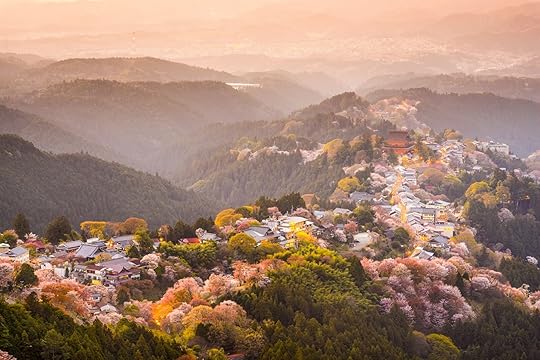
Photo: ESB Professional/Shutterstock
If you’d prefer a more in-depth tour, opt for the 80-minute flight. This will take you over historical sights such as Hase-ji Temple, Heijo-kyo, Mimuro-san, Asago-Sonji-ji Temple, and Koriyama Castle Ruins surrounded by cherry trees. The more luxurious route allows you to enjoy the best blooms in the region of Nara and Yoshino. It’s worth noting that you can open the windows during the flight. Which must be a pretty magical experience as you fly over tree tops of blossom.
Flight time: 80 minutesCost: $1,860
Photo: AirX Co., Ltd.
AIROS Skyview also run flight experiences over Kyoto and Tokyo.
Trips are weather dependent. Flights will depart if the pilot approves conditions are sustainable. Refunds and rescheduling are available if you are not able to fly on your chosen date. 
Houston Airbnbs to Experience the City’s Food, Music, and History
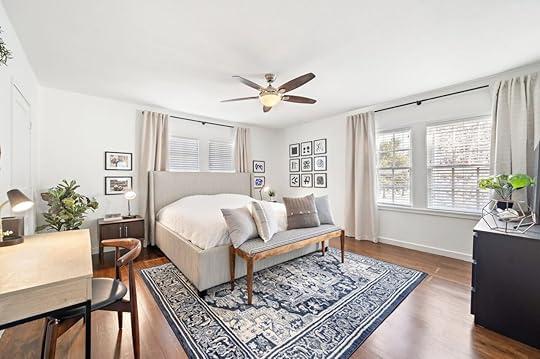
Houston is the most populous city in Texas, so undoubtedly, there are many things to do on a trip here. Explore the big city from the historic Heights area with its rich character-filled architecture to The Museum District, home to Hermann Park, the Houston Zoo, and other world-class museums. To get your Houston adventure started, here are the top Airbnb Houston rentals across the city in the city’s most popular neighborhoods.
Airbnb Houston rentals in The HeightsAirbnb Houston rentals in MontroseAirbnb Houston rentals in The Museum DistrictAirbnb Houston rentals in Galleria/UptownLarge-group Airbnbs in HoustonWe hope you love the Airbnb Houston properties we recommend! Just so you know, Matador may collect a small commission from the links on this page if you decide to book a stay. Listed prices are accurate as of the time of publication.
Airbnb Houston rentals in The HeightsModern historic home in The Heights
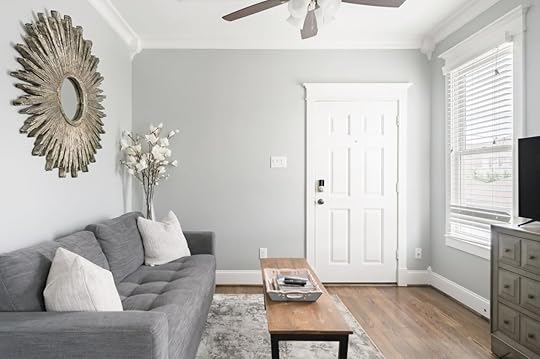 Photo: Airbnb
Photo: Airbnb Photo: Airbnb
Photo: Airbnb Photo: Airbnb
Photo: Airbnb Photo: Airbnb
Photo: AirbnbSee more photos
Guests can enjoy this historic home in the heights. It’s filled with modern touches while still showcasing the classic amenities the neighborhood has to offer. Take advantage of the full kitchen, living room, and spacious outdoor lounge with a seating area and a BBQ grill. The house is near many restaurants and shops located downtown and the Energy Corridor.
Four guests, one bedroom
Price: $114 per night
Airbnb Houston rentals in MontroseBohemian bungalow with outdoor patio and swing lounge
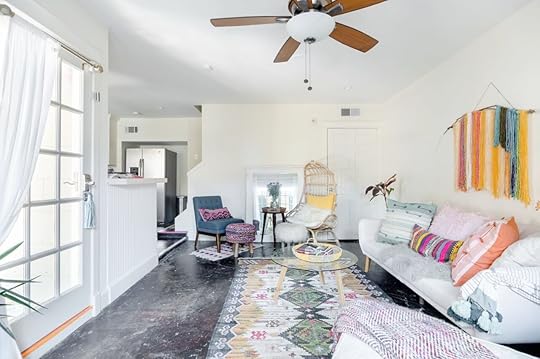 Photo: Airbnb
Photo: Airbnb Photo: Airbnb
Photo: Airbnb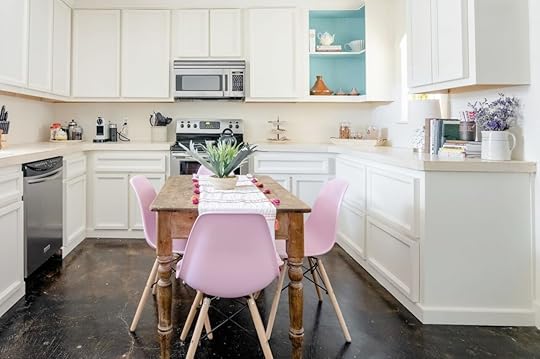 Photo: Airbnb
Photo: Airbnb Photo: Airbnb
Photo: AirbnbSee more photos
Enjoy this bohemian-styled home in the heart of Montrose. This airy and artsy property is the perfect place to escape reality and enjoy all that Houston has to offer. There is a fully equipped kitchen, and an open colorful living room leads directly to the terrace and backyard area. The home has a spacious outdoor space with multiple seating areas and hanging swing chairs to create a relaxing garden theme.
Four guests, one bedroom
Price: $135 per night
Chic centrally located Montrose condominium
Taking a trip to Texas? Check out Matador’s guides to the best places to stay across the Lone Star State:
The best Texas Airbnbs to experience Lone Star culture 9 San Antonio Airbnbs within walking distance of the riverwalk The 9 most exciting boutique hotels in Dallas These 9 luxurious Houston Airbnbs are the best in the heart of the city The best Austin Airbnbs for large groups
 Photo: Airbnb
Photo: Airbnb Photo: Airbnb
Photo: Airbnb Photo: Airbnb
Photo: Airbnb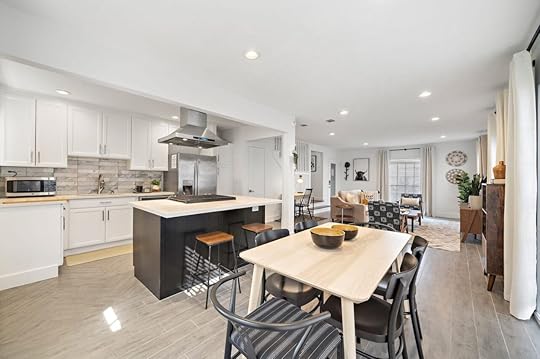 Photo: Airbnb
Photo: AirbnbSee more photos
This stunning Montrose retreat is centrally located and conveniently near all attractions in the Montrose area. A clean, comfortable property, you’ll enjoy the mix of cozy and ergonomic styles with a hint of modern design. The home features an open floor-plan kitchen that leads into the spacious living room. The house is equipped with the amenities needed for a Houston vacation.
Five guests, two bedrooms
Price: $201 per night
Airbnb Houston rentals in The Museum DistrictNewly renovated modern and fashionable apartment
 Photo: Airbnb
Photo: Airbnb Photo: Airbnb
Photo: Airbnb Photo: Airbnb
Photo: Airbnb Photo: Airbnb
Photo: AirbnbSee more photos
Welcome to this modern, renovated apartment right in the heart of The Museum District. This stylish apartment has an open floor plan that flows throughout the apartment — a fully stocked kitchen with an island and a spacious living room for entertainment. The apartment is within walking distance of many restaurants, shops, and famous museums in Houston.
Six guests, two bedrooms
Price: $152 per night
 Photo: Airbnb
Photo: Airbnb Photo: Airbnb
Photo: Airbnb Photo: Airbnb
Photo: Airbnb Photo: Airbnb
Photo: AirbnbSee more photos
This trendy modern 2,400-square-foot home in Musem Park is the perfect place for a Houston gateway. The house has a spacious living room and kitchen that make up the downstairs area. There is also a relaxing outdoor patio area to sit and wind down with a glass of wine after a day of exploring the city.
Six guests, three bedrooms
Price: $291 per night
Airbnb Houston rentals in Galleria/UptownLuxury three-story condo near Galleria Mall
 Photo: Airbnb
Photo: Airbnb Photo: Airbnb
Photo: Airbnb Photo: Airbnb
Photo: AirbnbSee more photos
This luxury, cozy three-story condo is conveniently located near all activities and entertainment. The condo has a full kitchen and living room on the main level and three bedrooms on the second floor. It’s perfect for families as it’s packed with cribs and high chairs for families with small children., and is just one mile away from Galleria Mall and a few minutes from downtown, Water Wall Park, the aquarium, and more Houston entertainment.
Nine guests, three bedrooms
Price: $271 per night
 Photo: Airbnb
Photo: Airbnb Photo: Airbnb
Photo: Airbnb Photo: Airbnb
Photo: Airbnb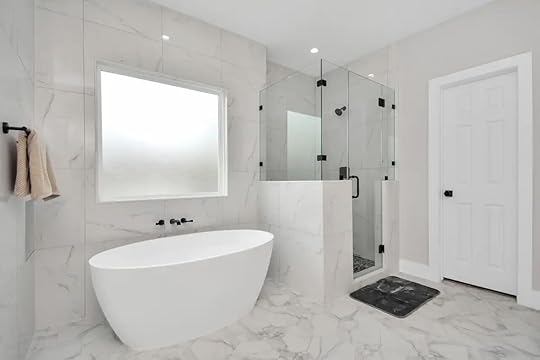 Photo: Airbnb
Photo: AirbnbSee more photosThis bright and airy townhome is centrally located in East Downtown, just a few minutes from some of Houston’s best attractions. The large windows let in plenty of natural light, and the interior is decorated with a modern Texas design. There are three bedrooms — one features a California King-sized bed, and two are outfitted with queen-sized beds. The large soaking tub in the spacious bathroom is a great place to relax between adventures. A full kitchen with clean white countertops and stainless steel appliances is stocked with everything needed to create a tasty meal. The living room has a comfortable couch, a large-screen TV, and a Bluetooth surround system.
Eight guests, three bedrooms
Price: $114 per night
 Photo: Airbnb
Photo: Airbnb Photo: Airbnb
Photo: Airbnb Photo: Airbnb
Photo: Airbnb Photo: Airbnb
Photo: AirbnbSee more photosThis elegant and luxurious East Downtown Houston property features three beds and 3.5 bathrooms. All three bathrooms have a soaking tub for relaxing. The interior feels “spa-inspired,” with a warm, clean, natural aesthetic. The spacious living room has an 85-inch smart TV, a comfortable and relaxing couch, and a cozy electric fireplace.
The primary bedroom has a king-sized bed, a large walk-in closet, and a Smart TV. The second bedroom features a queen-sized bed, a Smart TV, a personal microwave and a mini fridge. The third bedroom features two full-sized beds and a TV. All the bedrooms have access to the en-suite bathroom. In the kitchen, enjoy the city’s peaceful views and use modern appliances to cook a meal. Or, spend time in the spacious yard out back equipped with a gas grill.
Ten guests, three bedrooms
Price: $222 per night
 Photo: Airbnb
Photo: Airbnb Photo: Airbnb
Photo: Airbnb Photo: Airbnb
Photo: Airbnb Photo: Airbnb
Photo: AirbnbSee more photosThis contemporary, centrally-located three-bedroom, two-and-a-half-bathroom bathroom house feels like a home. The kitchen is open and decorated with natural wood tones and clean white tiling. It has all the necessities to create a tasty meal — including modern appliances and a large separate seating area. One bedroom has a king-sized bed, a large closet space, and a couch. Another bedroom has a comfortable queen-sized bed. The third bedroom is outfitted with two double beds. Upstairs, the bright bathroom has a spacious soaking tub and clean tile furnishings. Cozy up in the living room with books and a large TV with an impressive sound system. Guests who want to get some fresh air can either sit out on the balcony or spend time in the backyard, which is outfitted with a fire pit and a barbecue grill.
Eight guests, three bedrooms
Price: $211 per night
 Photo: Airbnb
Photo: Airbnb Photo: Airbnb
Photo: Airbnb Photo: Airbnb
Photo: Airbnb Photo: Airbnb
Photo: AirbnbSee more photosThis brand new house, nicknamed “The Golden Estate Chateau,” is located in Houston’s Sunnyside neighborhood and features a modern interior design with upscale furnishings, a full kitchen, three bedrooms, and two bathrooms.
It’s centrally located, just 10 minutes from downtown and less than 15 minutes from the Galleria area. The contemporary and open-floor plan design has elements of artsiness, like pops of color. Relax on the sectional sofa opposite the large Smart TV in the living room, or cook a meal in the gourmet kitchen, which boasts granite countertops and stainless steel appliances, including a full-size, see-through fridge and freezer with a filtered water and ice dispenser. The dining room area has a large table and an artsy chandelier, and there are three bedrooms — including a spacious primary suite with a TV, a walk-in closet, and a full private bathroom.
There are two other bedrooms —- one with a queen bed and another with a full bed — which share a clean, fully stocked central full bathroom. Outside, guests can enjoy a sunny backyard space with beach-themed decor, beach chairs, an umbrella, a volleyball net, and outdoor games like cornhole.
Eight guests, three bedrooms
Price: $109 per night
 Photo: Airbnb
Photo: Airbnb Photo: Airbnb
Photo: Airbnb Photo: Airbnb
Photo: Airbnb Photo: Airbnb
Photo: AirbnbSee more photosThis cozy Houston home is centrally amongst historic buildings and new homes, a quick drive from downtown and attractions like NRG, Galleria, and Minute Maid Park. The property comfortably hosts up to eight people, featuring four beds, a futon, and an oversized couch for sleeping. Amenities and on-site creature comforts include smart TVs, ensuite bathrooms, games, a Keurig, and a backyard. The open floor plan downstairs includes a living room with a reclining sectional sofa facing a 70-inch smart TV and a kitchen with a large island in the center and modern appliances.
Rest in one of the three bedrooms, including a primary bedroom with a king-sized bed, a smart TV, a walk-in closet, and an ensuite bathroom with a soaking tub. The second bedroom has a queen-sized bed, a smart TV, and a large closet with a private bathroom. The third bedroom offers two double beds, a smart TV, and a walk-in closet as well as a private bathroom. There’s also a loft area with an additional futon bed. In the backyard, lounge in the comfortable seating area and soak up some sunshine adjacent to the house.
Eight guests, three bedrooms
Price: $171 per night
 Photo: Airbnb
Photo: Airbnb Photo: Airbnb
Photo: Airbnb Photo: Airbnb
Photo: Airbnb Photo: Airbnb
Photo: AirbnbSee more photosThis farmhouse chic property is just a few minutes away from numerous tasty restaurants and shopping opportunities. The spacious living room area features a comfortable couch and a large, 70-inch flat-screen TV with large windows letting in plenty of natural light. The kitchen feels contemporary. It’s outfitted with hardwood floors, a sizable island, suave dark cabinetry, and upscale appliances (like a wine chiller). There are three bedrooms. One bedroom features a full bed and a standing desk. The second bedroom has an ensuite full bathroom and a small balcony. The large primary bedroom has a huge walk-in closet and an ensuite two-sink bathroom. Outside, the grassy backyard is fenced in, and it feels private.
Six guests, three bedrooms
Price: $242 per night
 Photo: Airbnb
Photo: Airbnb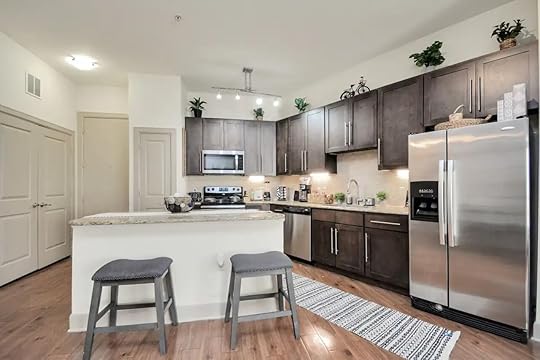 Photo: Airbnb
Photo: Airbnb Photo: Airbnb
Photo: Airbnb Photo: Airbnb
Photo: AirbnbSee more photosThis modern, rustic mid-rise apartment is less than one mile from NRG and 10 minutes from Downtown Houston. Guests can make a meal in the chef’s kitchen with modern stainless steel appliances, an island for more cooking space, and a separate dining area. The open floor plan in the shared space leads to the living room, with large windows letting in plenty of natural light and a couch that converts into a sleeper sofa bed. The primary bedroom has a king-sized bed and a 4K smart TV. The second bedroom features a queen-sized bed and a 4K Smart TV. Outside, spend time on the private patio in the fresh air. Visitors will have access to the apartment complex’s shared amenities, including a business center, pool, and gym.
Five guests, two bedrooms
Price: $115 per night
 Photo: Airbnb
Photo: Airbnb Photo: Airbnb
Photo: Airbnb Photo: Airbnb
Photo: Airbnb Photo: Airbnb
Photo: AirbnbSee more photosThis recently renovated four-bedroom, three-bathroom house is in a safe and welcoming neighborhood, easily drivable to downtown Houston, but it feels like a sanctuary that’s a world away. The property is a great spot for groups such as multi-generational families.
It features a dedicated game room outfitted with a pool table, a myriad of board games, and a living room with a large 70-inch TV television with a soundbar. The kitchen is chic, with bright white cabinets and countertops featuring the latest appliances, including a Keurig. There’s a separate formal dining room with a table big enough to seat at least six people. In the primary bedroom, rest in the king-sized bed. In a second bedroom, there’s a set of two twin bunk beds and one full-sized bunk bed. In a third bedroom, there’s a single full-sized bed, and a fourth bedroom is outfitted with a queen-sized bed. High ceilings and a sleek modern design make the home feel modern but comfortable. Outside, there’s a big grassy backyard space with a seating area and patio.
Fourteen guests, four bedrooms
Price: $266 per night
 Photo: Airbnb
Photo: Airbnb Photo: Airbnb
Photo: Airbnb Photo: Airbnb
Photo: Airbnb Photo: Airbnb
Photo: AirbnbSee more photosThis contemporary 3-bedroom home in Central Houston is a new build, outfitted with the latest and greatest technology and amenities. Each bedroom has its own full bath and Smart TV, with beds featuring memory foam mattresses. In the primary bedroom, guests will find a king-sized bed, a walk-in closet, a 65-inch TV, and a large window overlooking downtown Houston. There’s a bathroom attached to the primary bedroom with a large soaking tub. The second and third bedrooms also feature a queen-sized bed. Relax in the living room with a 75-inch TV and sliding doors that open onto a balcony. Cook in the kitchen stocked with the essentials and outfitted with modern appliances. The decor feels bohemian and bright, with wooden floors, tan-colored Italian leather couches, and eclectic wall art.
Six guests, three bedrooms
Price: $160 per night
 Photo: Airbnb
Photo: Airbnb Photo: Airbnb
Photo: Airbnb Photo: Airbnb
Photo: Airbnb Photo: Airbnb
Photo: AirbnbSee more photosThis upscale one-story home features three bedrooms and two bathrooms. The spacious living room has a cozy L-sectional couch and a large Smart TV. The kitchen features stainless steel appliances and granite countertops, and the dining area is open with a table that can comfortably seat four people. Two bedrooms feature full-size beds, and the primary bedroom is outfitted with a queen-sized bed. It’s a solid spot to set as a home base with easy driving access to landmarks like NRG stadium and downtown Houston.

Eight guests, three bedrooms
Price: $147 per night
Get a Sneak Peek of Summer on a Spring Trip to Kelowna, BC

From the top of Knox Mountain in Kelowna, British Columbia, Okanagan Lake stretches to the south, sparkling in the spring sunshine. The view is your reward after an invigorating hike up this extinct volcano, whose network of hiking and mountain biking trails are usually snow-free by March. After descending, you might make your way to one of the city’s 20 craft breweries for a hazy IPA on a sunny patio, or head over to the Kelowna waterfront to sweat it out in a floating sauna, followed by a cold plunge into Okanagan Lake.
It’s a bit of a cliché to brag that travellers to BC’s popular interior city can ski, stand-up paddleboard, and golf in a single day in the spring, but it’s not a stretch to say they can also easily hike, swim, and enjoy Kelowna’s patio culture over the course of an afternoon. The warm season typically arrives here right on cue, with green grass, spring blossoms, and mild daytime temps between 15 and 24 degrees Celsius. And with fewer visitors than during the busy summer, the pathways, fairways, waterways, and wineries offer that much more relaxation.
Get ready to toast Kelowna’s long days and golden evenings with outdoor adventures, rosé releases, and orchard views. Here’s how to do it.
Raise a glass to BC Wine Month.
Photo: Tourism Kelowna / Shawn Talbot Photography
April kicks off BC Wine Month, and Kelowna’s nearly 40 wineries grow everything from Auxerrois to Zinfandel. What began as a campaign to encourage wine-lovers to try and then buy local vintages has grown into a month-long celebration of new releases — including hotly anticipated rosés — and fun winery events like concerts and immersive wine tastings.
The maxim “rosé all day” was surely invented in the Okanagan Valley, where most wineries release pretty pinks in April. Swing by the stunning tasting room at CedarCreek Estate Winery to try the new Platinum Sparkling Rosé and 2023 Platinum Naramata Rosé before they sell out.
To earn your wine rewards, put on your yoga pants at The View Winery in southeast Kelowna for a guided meditation accompanied by wine, chocolate, and live music. Later in the season, trade out your mat for a checkered tablecloth during a private orchard picnic paired with a rosé or Riesling.
Hit the pathways and fairways.
Photo: Tourism Kelowna / Darren Hull Studios
With snow seeming like a distant memory, most trails in the valley bottom become accessible in March. Stretch your legs along the extensive Mission Creek Greenway, keeping an eye out for showy mallards swimming in the water and bald eagles perched high in the towering cottonwood trees that line the creek’s banks. After that warmup, head up one of Kelowna’s mountains for lake and city vistas. The switchbacks along the Boucherie Rush Trail — located across the lake in West Kelowna — challenge those seeking a workout on the flanks of iconic Mount Boucherie.
For an adrenalin hit, switch out your hiking boots for two wheels and pedal some of the city’s hundreds of kilometers of bike lanes, multi-use pathways, and thrilling single track. Thanks to its flowy and fun cross-country trails, challenging descents through rock gardens, and zippy bermed corners, Kelowna is gaining a reputation as a mountain biking destination. Get your wheels spinning on the Crawford Trails in Myra Bellevue Provincial Park, with 156km of paths that wind through a pine forest past ancient rock outcrops speckled with lichen. Fat-tire enthusiasts can then level up on the more advanced Gillard Trails, where a new climb trail leads to a single-track playground of slabs, skinnies, and gap jumps.
With 2,000 hours of annual sunshine, Kelowna also hosts one of Canada’s longest golf seasons — the area features 19 courses that operate between March and October. Tee up at Tower Ranch Golf Club, a Thomas McBroom-designed championship course with dramatic, undulating fairways. After trying for a birdie or eagle on this par-72 course, pair lunch with a chilled glass of patio-pleasing Pinot Gris at Tower Ranch Restaurant.
“Cherry pick” your blossom shots.
Photo: Tourism Kelowna / Nic Collar Film
Between late April and mid-May, Kelowna’s thousands of acres of orchards run riot with pink and white blossoms. Take in the views of cherry, apricot, peach, apple, and pear trees bursting to life along Lakeshore Drive and the country lanes in southeast Kelowna. Pull over at Lakeside Orchards to snap the ideal shot for your ‘gram grid.
Fresh fruit won’t be in season quite yet, but you can stop in at a local fruit stand or the Kelowna Farmer’s & Crafter’s Market to buy jams, preserves, and pickled vegetables from last year’s harvest, along with heirloom eggs or honey from one of the city’s many family-run farms.
Find the perfect patio.
Photo: Tourism Kelowna / Wines of British Columbia
Kelowna’s patio season usually starts at the end of March, and many of the best restaurants, breweries, and wineries offer outdoor real estate where you can sit in the sun with city or lake views. Reserve a table on the Eldorado Boardwalk to watch boaters come and go in the hotel’s busy marina while you snack on flatbread pizza washed down with an El Caesar (Absolut vodka, Clamato, lemon and lime, Canadian maple syrup, tabasco, and Worcestershire) from the Eldorado Lounge. The historic Hotel Eldorado dates to 1926 and is the place to be on warm evenings, especially if you time your visit for sunset.
Those seeking a pint should head to Shore Line Brewing Co. for delicious food, great craft beer, and a relaxed atmosphere. Find it in Kelowna’s Mission district, where the views of Okanagan Lake are stunning. Or make yourself comfy on the large patio at Red Bird Brewing — their backyard is your backyard. Red Bird regularly updates their tap list with small-batch test brews that you can only try in-house. And to discover even more craft beer, visit during the Kelowna Beer Festival in May. Over 30 breweries and cideries from BC and the Okanagan region will be there, and it all goes down in City Park.
For lakeside views from the heart of downtown, check out OAK + CRU Social Kitchen & Wine Bar. More than 250 wineries and local farmers, purveyors, and artisans in the Okanagan Valley inspired its menu. For an afternoon snack, order the BC Artisan Cheese & Charcuterie Board, featuring cheese and crackers, dried fruit, and nuts. The AAA Alberta Beef Tenderloin, served with creamy mashed potatoes with OC signature charcoal butter and red wine jus, will certainly satisfy for a main meal. After dinner and a drink, stroll the adjacent Waterfront Boardwalk or window shop along Bernard Avenue.
Perched above Okanagan Lake and acres of vineyards in West Kelowna, Mt. Boucherie Winery and its open-air restaurant and patio, The Modest Butcher, will wine and dine you in style. Start with the always-delicious Things on Toast, paired with a glass of Sémillon, before moving on to the giant, shareable Tomahawk steak and a bottle of Merlot. With views across the water of vineyards glowing in the sun, it’s the perfect ending to a lovely spring day — which may just feel like summer in Kelowna. 
Matador Network's Blog
- Matador Network's profile
- 6 followers



